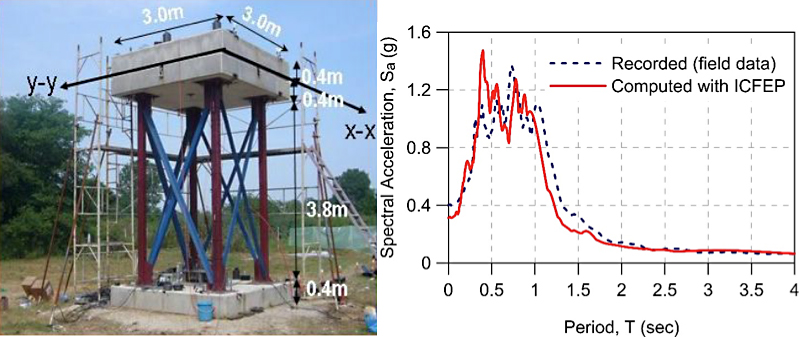Title of Project:
Dynamic Soil Structure Interaction: Three-dimensional Time-domain Analysis of Field Model Scale Experiments
Hosting Research Infrastructure:
EUROSEISTEST and EUROPROTEAS
No. of Users:
3
Team Leader:
Dpt of Civil & Environmental Engineering, Imperial College
Stavroula Kontoe
Team:
Dpt of Civil & Environmental Engineering, Imperial College
Lidija Zdravkovic, Julia Katharina Moeller
Summary of Project:
The proposed project involves a series of carefully planned field tests at the EUROPROTEAS prototype aiming to i) establish fundamental aspects of dynamic soil-structure response and ii) fully validate the numerical procedures which are employed in direct, time-domain soil-structure-interaction (SSI) simulations with integrated modelling of the structure and the soil domain.
A series of free-vibration and forced vibration tests will be undertaken to establish the response of the framed structure for a wide range of frequencies and for a wide range of shear strains induced in the founding soil. The research will benefit from the available site characterisation information at the EUROPROTEAS site and the available seismic records which will enable a rigorous calibration of the constitutive models and a reliable simulation of the free-field conditions at the site. For the numerical modelling, the state-of-the-art features of the bespoke finite element code ICFEP will be employed to study the impact of soil nonlinearity on the foundation and structural response, the use of boundary conditions in three-dimensional (3D) analysis and the comparison with simpler 2D analysis.
In engineering practice SSI problems are usually simplified, employing a single-degree-of-freedom system to represent a structure founded in a visco-elastic soil, which is represented by a dashpot and a spring. Such simplified models will also be employed to simulate the EUROPROTEAS response and will be contrasted to the numerical analysis predictions. The aim of this part of the project is to provide specific guidance on the applicability of such models, as it is expected that due to the assumption of visco-elasticity their applicability will be limited to a narrow strain range. Finally the project will provide an insight on the impact of structural rocking and on the use and range of applicability of simplified SDOF-spring-dashpots models in dynamic SSI.


